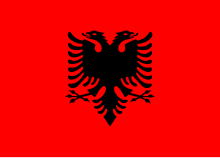Golden eagles in human culture
Reproduction and life cycle In human culture Mankind has been fascinated by the golden eagle as early as the beginning of recorded history.
Only after the Industrial Revolution, when sport-hunting became widespread and commercial stock farming became internationally common, did humans started to widely regard golden eagles as a threat to their livelihoods.
This period also brought about the firearm and industrialized poisons, which made it easy for humans to kill the evasive and powerful birds.
The Ancient Egyptian sun god Horus was depicted as having the head of a falcon, and was important as a deity representing the Pharaoh.
Horus played an important role, too, as representing resurrection, being the son of his mummified father Osiris and mother Isis.
Golden eagles can be trained to be highly effective falconry birds, though their size, strength, and aggressiveness require careful handling to control the risk of injury to the falconer.
The culture in which falconry with golden eagles is prominent today is amongst the Kyrgyz people of the Tien Shan Mountains of southeastern Kazakhstan and Kyrgyzstan.
The reasons for this are various, but among the nations that use the golden eagle as or in a state symbol, there are two clear traditions that help explain the modern usage.
This association of the golden eagle with Rome has also led to the adoption of similar symbols in other countries; for instance, the adoption of the related and physically similar bald eagle as the national bird of the United States was inspired by the conception of the United States as a modern reincarnation of the Roman Republic, a theme that recurs in other elements as well (including the prevalence of neoclassical architecture in American public buildings and the use of Roman terminology—such as naming the upper house of Congress the Senate—to hark back to the Roman model).
[10] For example, due to the perceived high level of parental care, eagles were associated with protection and even paralleled to God carrying the Israelites out of Egypt.
In Norse mythology, the golden eagle sits atop Yggdrasil, the great ash tree that runs through the universe.
A squirrel, Ratsatosk, carries messages and insults between the eagle at the crown and a serpent gnawing at the tree roots.
When an emperor died, his body was burned in a funeral pyre and an eagle was released above his ashes to carry his soul to the heavens.
[citation needed] Some nations use eagle feathers in the construction of prayer sticks, doctors’ rattles and sacred medicine pipes.
Per Thomas E. Mails: "in the mind of the Plains warrior in the 18th and 19th century, the male golden eagle flew above all the creatures of the world and saw everything.
"[29] The tail feathers of juvenile golden eagles are used in some ceremonies as well as to honor noteworthy achievements and qualities such as exceptional leadership and bravery.
The most common method to capture golden eagles is to lay a trap, consisting of an earth-colored tarp, with a dead jackrabbit on it, over a pit containing a crouching warrior.
Before every football game, Auburn University has a golden eagle fly around the stadium as tradition, despite the official school athletic name being the Tigers.






